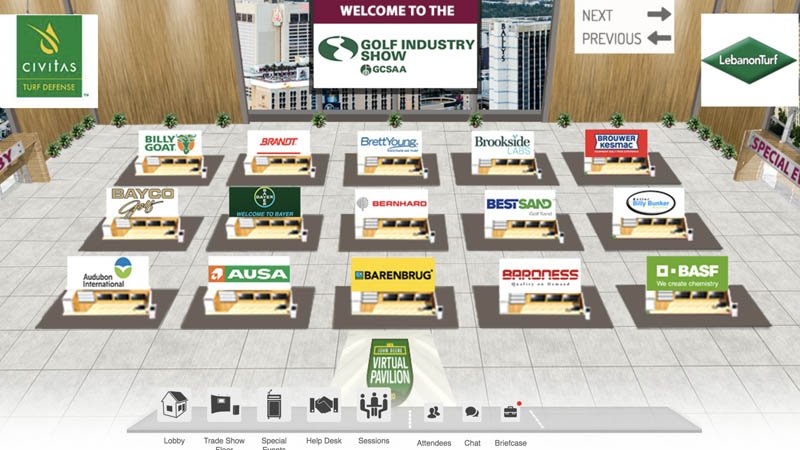 It is hard to imagine that there have been very many conversations since August among people in the golf turf world that at one time or another did not include the question: "So, what do you think about a virtual Golf Industry Show?"
It is hard to imagine that there have been very many conversations since August among people in the golf turf world that at one time or another did not include the question: "So, what do you think about a virtual Golf Industry Show?"
Social media is full of both plaudits and skepticism, which would be the case even if the show were held in person on the Las Vegas strip. Although the numbers for this year's show are not out, in the long run, it probably does not much matter what anyone thinks about the show or its format. It does not matter how many people registered, or how many "attended" the virtual event. And it does not really matter how many exhibitors bought booth space.
What matters, as long as GCSAA's financial health is tied to the annual tradeshow, is that the association just held an event. Period.
The association deserves a great deal of credit for adjusting to the challenges of Covid, finding a workable solution to its largest fundraiser and implementing it within six months.
It's no secret that there are vendors out there who would welcome a chance to socially distance themselves from an expensive tradeshow. Some have been looking for any excuse to say no to the expense of renting a booth, moving in product and flying in and boarding staff from around the country. This year, that excuse found them.
It's no secret that there are vendors out there who would welcome a chance to socially distance themselves from an expensive tradeshow...
After nearly a year of almost everything occurring in a virtual format, attending three days of online events from the office is much more challenging than in person. In the office, other tasks beckon. That does not happen so much when attendees are off site at an in-person event.
According to the GCSAA, 510 exhibitors bought space last year in Orlando. This year, a quick scan of the virtual tradeshow revealed that about 200 vendors exhibited in the online event. That's a drop of about 60 percent.
So what?
Many of those who did buy booth space were pleasantly surprised how many people checked in. Others were less impressed, claiming the drive-by visits were only an attempt to earn points redeemable for prizes.

Each year at GIS, enough university turf programs exhibit at the show to fill an entire row in some far-flung convention center. This year, there were not enough to fill a row on a computer screen. A few of those who did exhibit said they thought the shortage of schools on the floor helped drive traffic to them.
Last July, GCSAA chief executive officer Rhett Evans told TurfNet that the association has enough resources in reserve to withstand a year without a Golf Industry Show. So, while a profit would be nice in the short term, the long-term goal should have been more about just keeping the GIS brand in front of superintendents and the many suppliers of chemicals, fertilizers and equipment who support them. For the long-term future of the show, GCSAA needed to have something, anything with the GIS brand on it simply for validation, because it can be a challenge to bring back an event after canceling it, even for one year.
Skip a year, and a lot of vendors probably never come back. Skip a year, and risk showing that a marquee event is not essential, and some superintendents probably are never allowed to come back.
It will be interesting to see what the next in-person Golf Industry Show will look like. Many vendors will come back from what is hopefully just a year's hiatus. Undoubtedly some will not, figuring they finally have the out they have been seeking.
There were many staple events postponed or canceled throughout 2020: The British Open, the men's and women's NCAA Basketball Championship, the Little League World Series, the Tokyo Olympics, the Canadian Football League season, the men's and women's College World Series and Wimbledon, just to name a few.
What makes them different from GIS is it is easier to bring back an event that people are eager to get into. Bringing back an event people are eager to leave is much more challenging.
This is not necessarily an endorsement of a system that relies too heavily on what many believe is an outdated model. That said, holding the show, regardless of the financial return, is a cost worth incurring to keep the GIS name in front of superintendents, university professors and corporate partners. At least as long as the budget depends on a viable tradeshow model for success.


